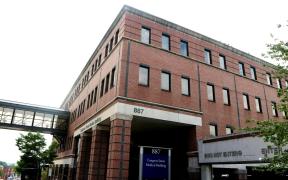MaineHealth offers comprehensive breast care services that include evaluation, imaging and diagnosis of breast changes, breast lumps and breast tumors. Learn more about breast lumps.
What is a breast lump?
A breast lump is a mass of tissue that forms in the breast. Most breast lumps are not cancer. Breast lumps can look and feel different, depending on the type. Sometimes, breast lumps can be a symptom of breast cancer.
Conditions that can cause breast lumps
- Breast cancer
- Breast cysts: Fluid-filled sacs that usually are not cancer;
- Fibroadenoma: Solid mass that is benign (noncancerous);
- Fibrocystic breasts: lumpy breast tissue;
- Intraductal papilloma: Wart- or pimple-like growth;
- Lipoma: Slow-growing mass that is not cancerous;
- Mastitis: Breast infection that affects women who are breastfeeding;
- Milk cyst (galactocele): Milk-filled cyst.
Latest mammogram technology
MaineHealth has the most advanced mammogram services at specialty clinics, breast care clinics and community hospitals, making it convenient to have routine and diagnostic breast exams.
Here are signs and symptoms that should be seen by a doctor:
- Breast lump is firm and stays in place
- Breast lump does not go away after four weeks to six weeks
- There are skin changes on your breast, including redness, crusting, dimples, puckering
- You have discharge, such as blood, from your nipple
- There are lumps under your arms, and they seem to be getting worse.
- Diagnosing a breast lump and breast change
Screening tests reveal areas that may need a biopsy. A biopsy removes cells that are then looked at under a microscope to check for cancer.
- Diagnostic mammogram: More X-rays are taken of the breast than for a routine screening mammogram
- Breast ultrasound: Looks for breast changes that may not be picked up on a mammogram
- Magnetic resonance imaging (MRI): Looks for breast cancer in women known to be at high risk. Also used to take a closer look at breast cancer, after it is found
- Ductogram: Shows the cause of nipple discharge, using dye and an X-ray
- Ultrasound guided biopsy: A breast biopsy removes a sample of breast tissue that is looked at under a microscope to check for breast cancer. Ultrasound is used to show an image of the breast tissue during the biopsy.

































